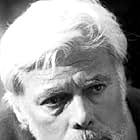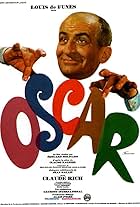A young female gynecologist tries to break taboos in the sixties: women's right to own and control their own body.A young female gynecologist tries to break taboos in the sixties: women's right to own and control their own body.A young female gynecologist tries to break taboos in the sixties: women's right to own and control their own body.
Photos
Robert Benoît
- Yves Hugon
- (as Robert Benoit)
- Director
- Writers
- All cast & crew
- Production, box office & more at IMDbPro
Storyline
Did you know
- TriviaItalian censorship visa # 47812 delivered on 1 October 1966.
Featured review
In the sixties,God'art would speak to the elite ("Le Petit Soldat" ,"Masculin Féminin" ).Claude Autant-Lara would speak to the people ,his movies were accessible to anyone ;they were daring though :in 1961 ,when the Algeria war was not yet over ,he devoted a whole movie to a conscientious objector ("Tu Ne tueras Point" = thou shalt not kill ") ;in 1963 ,the young men who refused to be soldiers were granted objector status.In 1965 ,he made THE feminist French movie of the decade ,breaking taboos ;women's right to own and control their own body :birth control ,pill ,abortion ( which would become legal in the mid-seventies ,thanks to Simone Veil)
Indeed,so many and so horrendous were the chances taken by Autant-Lara in this film that,with any lesser talent ,the result could have been disastrous :he did put his reputation on the line ,and with few notable exceptions ,both movies (the objector and the woman in white) were slagged off by a critic under the new wavelet's thumb.
This woman in white is a gynecologist who makes her way through the sixties (which were not a happy time for everyone,contrary to received ideas ) ;she's still an intern in a hospital and sometimes clashes with her macho colleagues -there were few women doctors in the sixties-;she writes her diary ,and the movie is a long flashback in which she flips through the pages of her book , remembering events of her occupational life :
Great moments :
-the delivery : the prematurely aged woman says it will be her seventh kid ,and she did not want another one but her husband is a man and he...;the nurse (Claude Gensac, known by De Funes's fans )first appears as an unsympathetic nurse ,who humiliates the young gynecologist in front of her male colleague ,who is hard on the woman in labor;in direct contrast to this, the sweet gynecologist and her encouraging words;and in the end , unexpectedly the three women "make their peace with one another", and welcome the new baby born ;Autant-Lara's actresses directing is absolutely mind-boggling ;in this field,he could teach a thing or two to the young Turks.
"These are laws for the poor" says Claude thinking of the story of a poor girl (Paloma Matta) helped by a backstreet abortionist -things have not changed since the facts depicted by Chabrol in "Une Affaire De Femmes"-sapped by tetanus ;the facts are told by Claude Autant-Lara with an admirable succintness: Claude reassuring her patient about the state of her health ;her first doubts; the book in the library;the dying patient 's face in close-up ;the seedy hotel where it's impossible to take care of a baby;the husband blamed by the parents.
Filmed in stark black and white ,this could be a totally depressing movie ;even the schoolboy pranks ,de rigueur among the students world ,often verge on drama ;but the final message tries to comfort the 1965 audience .
Marie-José Nat found here her lifetime part ;she's admirable :I've rarely seen such an expressive face ,displaying solace,comfort ,hope and ,yep! resilience in a man's man's world ;her performance compares favorably with Hardy Kruger's in "Le Franciscain De Bourges " (1968),another unfairly despised movie.
Written by Jean Aurenche and René Wheeler ,based on an André Soubiran 's book , it would be followed by "Le Nouveau Journal D'Une Femme En Blanc aka "Une Femme En Blanc Se Révolte" .
Indeed,so many and so horrendous were the chances taken by Autant-Lara in this film that,with any lesser talent ,the result could have been disastrous :he did put his reputation on the line ,and with few notable exceptions ,both movies (the objector and the woman in white) were slagged off by a critic under the new wavelet's thumb.
This woman in white is a gynecologist who makes her way through the sixties (which were not a happy time for everyone,contrary to received ideas ) ;she's still an intern in a hospital and sometimes clashes with her macho colleagues -there were few women doctors in the sixties-;she writes her diary ,and the movie is a long flashback in which she flips through the pages of her book , remembering events of her occupational life :
Great moments :
-the delivery : the prematurely aged woman says it will be her seventh kid ,and she did not want another one but her husband is a man and he...;the nurse (Claude Gensac, known by De Funes's fans )first appears as an unsympathetic nurse ,who humiliates the young gynecologist in front of her male colleague ,who is hard on the woman in labor;in direct contrast to this, the sweet gynecologist and her encouraging words;and in the end , unexpectedly the three women "make their peace with one another", and welcome the new baby born ;Autant-Lara's actresses directing is absolutely mind-boggling ;in this field,he could teach a thing or two to the young Turks.
"These are laws for the poor" says Claude thinking of the story of a poor girl (Paloma Matta) helped by a backstreet abortionist -things have not changed since the facts depicted by Chabrol in "Une Affaire De Femmes"-sapped by tetanus ;the facts are told by Claude Autant-Lara with an admirable succintness: Claude reassuring her patient about the state of her health ;her first doubts; the book in the library;the dying patient 's face in close-up ;the seedy hotel where it's impossible to take care of a baby;the husband blamed by the parents.
Filmed in stark black and white ,this could be a totally depressing movie ;even the schoolboy pranks ,de rigueur among the students world ,often verge on drama ;but the final message tries to comfort the 1965 audience .
Marie-José Nat found here her lifetime part ;she's admirable :I've rarely seen such an expressive face ,displaying solace,comfort ,hope and ,yep! resilience in a man's man's world ;her performance compares favorably with Hardy Kruger's in "Le Franciscain De Bourges " (1968),another unfairly despised movie.
Written by Jean Aurenche and René Wheeler ,based on an André Soubiran 's book , it would be followed by "Le Nouveau Journal D'Une Femme En Blanc aka "Une Femme En Blanc Se Révolte" .
- dbdumonteil
- Jun 20, 2018
- Permalink
Details
- Runtime1 hour 45 minutes
- Color
- Sound mix
- Aspect ratio
- 1.66 : 1
Contribute to this page
Suggest an edit or add missing content

Top Gap
By what name was Journal d'une femme en blanc (1965) officially released in Canada in English?
Answer





